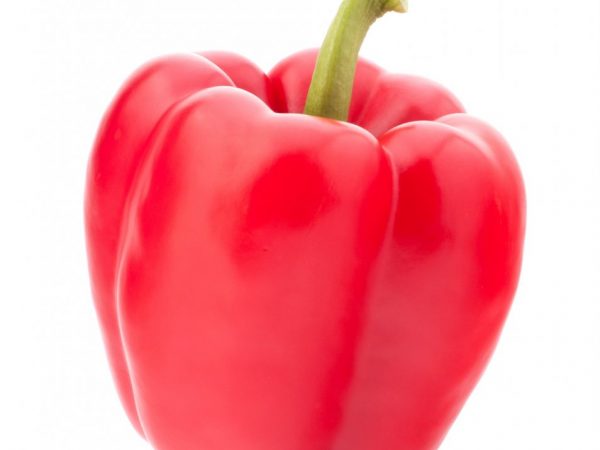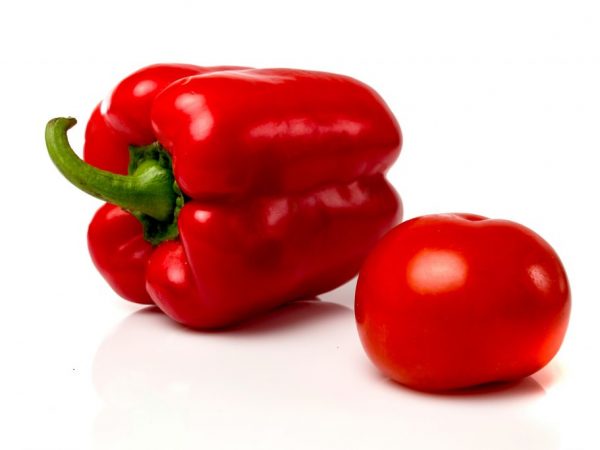Claudio pepper description
Claudio pepper was developed by breeders Nunhems (Bayer) in Holland. It has a number of characteristics that have attracted gardeners for over twenty years. In the article, we will consider the features of pepper, the method of growing and recommendations for care.

Pepper Claudio
Characteristic
Pepper of the Claudio f1 variety belongs to the early maturing: from the emergence of shoots to the moment of harvesting the fruits, it takes from 75 to 80 days.
The yield of this species is good. The peppers ripen practically at the same time. At the first wave, from 7 to 10 fruits are tied on the plant, later the ovary is less abundant (6-8 fruits).
Claudio is a sweet pepper. Suitable for growing in open beds, but it is possible to grow it in film or glass greenhouses. The variety is distinguished by good transportability and long shelf life. Claudio F1 is heat-resistant, the fruits are very rarely baked even in strong sun.
Description of the bush
Description of the bush: plant of determinant type, semi-spreading. The bushes are quite powerful, of average height, which ranges from 100 to 120 cm in warm climates. A garter is essential.
Claudio pepper has many leaves. They are large, have a rich dark green color. Wrinkles are very faintly visible.
Description of the fetus
Characteristics of fruits: fruits are large, their weight can reach from 100 to 180 grams (on average), but often reaches 200 - 250 grams. They have an elongated cuboid shape with a division into 4 chambers.
Claudio peppers have a durable glossy finish. At the onset of technical ripeness, the fruits have a bright green color, which later (during full ripening) will change to a rich red, even burgundy.
The wall thickness is different, and, depending on the growing conditions, ranges from 6 to 13-14 mm. The pulp is very juicy, fleshy and tasty, there is no bitterness. Pleasant, slightly spicy aroma. Due to this, they are most often consumed raw, but they are also good for making salads, stewing, canning and stuffing.
Benefits
The advantages of the variety include:
- early maturity;
- good productivity;
- resistance to many diseases;
- excellent taste;
- good transportability and long shelf life;
- versatility of fruit use;
- seeds have good germination;
- heat resistance.
Among the disadvantages are the following:
- the need for constant comprehensive care;
- high risk of insect damage;
- exactingness to watering.
Sowing and planting

The best peppers
Growing in seedlings is optimal for this variety. It is believed that the seeds of the Claudio f1 pepper should be sown at the end of February - March (depending on the region).
Soil plays a significant role; it must be fertile enough and have neutral acidity. Before planting seedlings, the bed must be well dug up, weeds removed, and also lime it.
Before planting, the seedlings must be hardened, and in the first 6-7 days after transplanting, it is necessary to keep them in the shade and monitor the soil moisture.The optimal distance for good plant growth is considered to be 30 x 30 (35 x 35) cm. The soil for planting should be well warmed up and sufficiently moist.
Care
Claudio f1 bell pepper needs regular maintenance. Regardless of where the plants are cultivated, in open soil or in greenhouses, the correct temperature must be observed. During the growth of plants, the temperature should be maintained - 22 °, and when the peppers ripen, it should be increased to 25-26 °.
At the same time, we must not forget about watering and the presence of good lighting. Irrigation with heated water in the late afternoon is considered correct. A lack of light can provoke the formation of strangely shaped fruits and a significant elongation of the stems.
The description of the variety indicates that plant nutrition consists of three stages. Before flowering, it is best to add rotted manure to the soil. Phosphate fertilizers are used after the appearance of ovaries, and potash fertilizers must be applied at the stage of fruit ripening.
Plants form not only in 1, 2 and 3 stems, removing the rest of the shoots. The first fork in the bush informs you to remove the lower leaves and buds.
Possible diseases
Pepper has good immunity to many common diseases. He is not afraid of either the tobacco mosaic virus, or the potato virus, or the hardness of the peppers.
The variety is often affected by aphids, whiteflies and beetle larvae. To avoid this, it is necessary to treat the plants with special preparations.
Conclusion
It is safe to say that the employees of Bayer (Nunhems) did a good job and created an excellent hybrid that does not lose its popularity even after years.
Seeds of good germination, strong plants, good ovary and excellent taste of the fruit - all this is characteristic of this variety. But it must be remembered that this hybrid is suitable for growing for those who have enough time for comprehensive care.


